Please note, links to all the Freedom Essays are included at the end of this essay. Open any essay to read, print, download, share or listen to (as an audio).
Freedom Essay 42
Cave paintings evidence the original innocence
and sensitivity of the human race
As has been described at length throughout these essays, and in all of Jeremy Griffith’s work, the overall essential feature of the human journey since we first became conscious some 2 million years ago is that of the accumulation of knowledge at the expense of our innocent all-loving and all-sensitive original instinctive self or soul.
The problem, of course, has been that until this reconciling explanation of the human condition was found that explains why we had to depart from an original cooperative, loving, selfless state of innocence, this fundamental truth was unbearably condemning of our present competitive, aggressive and selfish upset, psychotic and neurotic conscious self, and therefore had to be denied. We couldn’t face the truth until we could explain it (see The Great Guilt that causes the Deaf Effect). However, with the ‘intellect vs instinct’ explanation of the human condition now found (which is presented in THE Interview and Video/F. Essay 3), we can acknowledge our innocent past (see F. Essay 21), and appreciate evidence of it, such as the incredibly sensitive cave paintings that are the subject of this F. Essay.
– – – – – – – – – – – – – – – – – –
What follows is an adapted excerpt by Jeremy Griffith from Chapter 8:11C of FREEDOM.
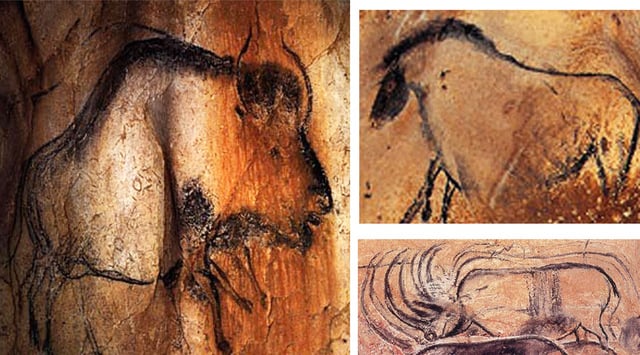
Extraordinarily empathetic renditions of animals in the
Chauvet Cave in southern France, c.30,000 years old
The extreme sensitivity that is particularly apparent in the rock paintings of the Bushmen of southern Africa and Australian Aborigines, and in the cave paintings of early humans in Europe, is especially revealing of how much innocence the human race has lost in relatively recent times. The Chauvet Cave in southern France, for example, contains a wealth of cave drawings that date from around 30,000 years ago that have inspired such descriptions as ‘miraculous’, ‘overwhelming in density, humbling in sophistication, and awe-inspiring in sheer beauty’ (‘The Goddess Bites’; see www.wtmsources.com/131). The drawings (some of which are reproduced in this essay) are three dimensional, even animated, such as the rhinoceros above that is depicted repeatedly throwing his horn forward. Indeed, the bison, mammoth, horses, rhinoceroses, lions, bears and other animals that these early humans so effortlessly drew appear so real it is as if they are alive! You can almost sense what it is like to be those animals; the whole struggle of their lives is revealed before our eyes.
The reason this extraordinary sensitivity has now been lost is because when our mind becomes preoccupied with upset, as it did under the duress of the human condition, it loses the ability to take an interest in anything else. The pain in our brain stops us feeling or seeing or engaging in our surroundings. Plato described our human-condition-afflicted state of alienation or estrangement from the true world that our original instinctive self or soul has complete access to as living in a dark cave where we can only ‘see dimly and appear to be almost blind’ (Plato’s cave allegory is explained in depth in Video/F. Essay 11). Our brain is distracted from everything else that is happening in the world. The more upset that our mind is preoccupied with, either trying to understand or, if the upset is extreme, constantly trying to block out, the less we can access all the other events and experiences going on around us. So, as the human race became more and more upset, its ability to feel and savour the world around it shrank. So although the humans responsible for the drawings in the Chauvet Cave were not anything like as upset-free/innocent as humans were 2 million years ago before upset first began to develop in earnest, their ability to draw the animals around them so vividly and empathetically indicates they were much, much more innocent than humans today. Clearly alienation has increased at an extremely rapid rate in the final stages of humanity’s 2-million-year journey through adolescence.
27,000 year old Bushman rock painting of Bushman hunting eland,
Kamberg, Drakensberg Mountains, South Africa
I might mention that I learnt long ago that to draw the little pictures that are included throughout FREEDOM (all of which can be viewed at www.humancondition.com/jeremy-art-work), I had to disconnect my conscious mind and just let my instinctive sensitivity express itself, and that if I didn’t do that I simply couldn’t draw at all. For example, the drawing of the three ‘Childmen’ happily embracing (that you can see below left) that I used in ch. 8:4 of FREEDOM to illustrate humanity’s childhood stage was done so quickly I shocked myself because I could hardly believe that such an empathetic drawing could be produced from an almost instant scribble. At that moment I saw just how much sensitivity we humans once had, and how much alienation now exists within us 2-million-years’-embattled humans.
Yes, the extraordinary empathy and accuracy of the paintings of animals in the rock and cave paintings shown above are similarly incredibly indicative of the amount of sensitivity we humans once had and have since lost; we truly are an embattled species now, so worn out, so brutalised. How extremely sensitive must early humans have been! Sir Laurens van der Post wasn’t exaggerating when he wrote about the relatively innocent Bushmen that ‘He and his needs were committed to the nature of Africa and the swing of its wide seasons as a fish to the sea. He and they all participated so deeply of one another’s being that the experience could almost be called mystical. For instance, he seemed to know what it actually felt like to be an elephant, a lion, an antelope, a steenbuck, a lizard, a striped mouse, mantis, baobab tree’ (The Lost World of the Kalahari, 1958, p.21 of 253). Plato made a similar observation when, as is mentioned in F. Essay 53 and paragraph 174 of FREEDOM, he described our innocent ancestors as ‘having…the power of holding intercourse with brute creation [being able to relate to other animals]’. (Sir Laurens’ profound appreciation of the Bushmen, and his contribution to understanding the human condition, is explained in F. Essay 51.)
The pictures included to this point offer some indication then of how, when all the upset in humans heals, the world is going to open up for us humans. Our long repressed all-loving and all-sensitive original instinctive self or soul is going to come back to the surface. We are going to be able to feel everything around us. We are going to have so much kindness and love and empathy for each other and our fellow creatures because we will, once again, be able to feel everything they are experiencing, including just how embattled the lives of animals are; they suffer enormously from the ‘animal condition’, from the unrelenting need to compete for food, shelter, space and a mate. While, through the nurturing, love-indoctrination process, our ape ancestors were able to break free from the tyranny of genes having to ensure their own reproduction, other animals remain stuck in a continuous cycle of competition (read about the love-indoctrination process in F. Essay 21). Unlike humans (and bonobos, who are in the midst of developing love-indoctrination), other animals can’t develop full unconditionally selfless cooperative instincts (this limitation is explained in F. Essay 25: The truthful biology of life). And so above all else, it is this empathy with, this feeling for, the relatively short, brutish, forever-having-to-fight-for-your-chance-to-reproduce lives of animals that those who made these drawings have so sensitively expressed. To use Sir Laurens’ words, they ‘seemed to know what it actually felt like to be’ a bison, horse or rhinoceros. You can, as described, sense the whole internal struggle of the animals’ lives in these drawings (of the horse, rhinoceroses and the bison included earlier, and the bison above). Their huge chests heave with their brutal and tough battle to survive and reproduce—they are struggling so much to endure their lot it is as if they have asthma! Yes, now that humans can get over the terrible agony of our ‘human condition’, we will again be able to empathise with the terrible agony of the ‘animal condition’. It’s not very nice to have to belt the living daylights out of others to ensure your genes reproduce, let alone other members of your own species—in fact, your cousins, uncles and even your own father! No, it is not at all easy being a non-human animal, and that is an extreme understatement, just as it has not been at all easy being an upset human, which is, of course, another extreme understatement!
17,300 year old cave painting of a wounded bison, a dead man with a broken spear beside him,
a bird and what appears to be a rhinoceros in Lascaux, France. While there are many paintings
of animals in the Lascaux caverns there is only this one image of a human.
Again, while the Paleolithic artists clearly weren’t as alienated as humans are today, they were still much, much more alienated than humans originally were. I think this is revealed by the fact that these cave artists almost completely avoided depicting humans. For instance, in the entire Chauvet Cave complex there is only one representation of a human, and even that is limited to a drawing of only the lower half of a woman’s torso; similarly, amongst the hundreds of paintings in the Lascaux caverns, there is only one image of a human (see above). On the few occasions when these cave artists tried to depict humans they almost invariably ended up drawing stick figures. The human face, in particular, which you would think would be the most interesting and relevant of subjects for these artists to depict, seems to have been totally beyond their ability. It seems clear that the facial expressions of humans were by then so alienated, so devoid of the innocence that they must have once exhibited, that our instinctive self or soul couldn’t relate to it; it couldn’t, and perhaps didn’t want to, draw us. What did the great psychiatrist R.D. Laing say about our present alienated state?—‘between us and It [our true selves or soul] there is a veil which is more like fifty feet of solid concrete’ (read more about R.D. Laing in F. Essay 48). The artist Francis Bacon revealed just how corrupted and alienated upset humans really are in his honest painting of the psychologically-contorted-smudged-human-condition-afflicted-face that is included after paragraph 124 of FREEDOM and provided below. Indeed, the weird, kidney-shaped blob for the human face that the Aboriginal artist drew in the rock painting shown below, from Ubirr in the Kakadu National Park in the Northern Territory of Australia, is very Bacon-like! Revealingly, when I was looking at this painting at Ubirr, which is thought to be some 2,000 years old, I asked a guide, who was accompanying a tour group, whether she thought the reason the paintings of wildlife were so accurate while the paintings of the humans were so pathetic was because we are now too alienated for our soul to be able to empathise with us, the guide, and everyone else, reacted with a real shudder and audible choking noise. What I had said was just too close to the truth. (The reason that humans so readily depict faces now is that since Resignation became almost universal following the advent of agriculture some 11,000 years ago (see par. 750 of FREEDOM) we have just ridden rough shod over our soul’s sensitivities and drawn/painted faces without letting the truth of the corruption that we are looking at reach us—except on those rare occasions where the likes of Francis Bacon and Jean-Michel Basquiat (see par. 1059 of FREEDOM) painted the human condition so honestly.)
It is truly an insight into how sensitive and loving humans once were that our instinctive self or soul can’t relate to the way we are now. Consider the tenderness in the expression on the face of the Madonna in the drawing of the Madonna and child that was included to the right of the three ‘Childmen’ earlier. My soul drew that—I, my embattled conscious self, had nothing to do with it. What did the great Spanish artist Pablo Picasso famously say about his ability to paint: ‘It’s taken me a lifetime to learn to paint like a child.’ Truly, as the poet William Wordsworth wrote, ‘trailing clouds of glory do we come, From God [the integrated, loving, all-sensitive state], who is our home’ (read about Wordsworth’s all-revealing poem in F. Essay 31). And people say humans have brutish, aggressive instincts! No, it’s the world we humans currently inhabit that is mad. It is just so traumatised with psychological upset that it hasn’t been able to deal with the fact that it is deeply, deeply dishonest; horrifically alienated. Turn on the television and find any wildlife documentary and I bet it will show pictures of crocodiles on the Mara River tearing wildebeest apart, or white sharks devouring seals, or snakes striking at the camera lens, or some equally ‘brutal’ interaction. All the beauty in nature has been reduced to representations of butchery and horror because we humans have become so upset that all we can cope with are pictures of animals ‘being’ as aggressive as we are—everything else in nature is far too confronting. I have been to natural Africa and seen its spectacle, and the sheer magic of it surpasses all imaginings; it is just achingly beautiful, the most sacred realm on Earth—‘sublime amnesia’ are the only words I can think of to describe it and they don’t even make sense. In 1992 when Annie and I visited Africa I particularly remember one experience there when we were fortunate enough to join a small reconnaissance party that was being sent in on foot into the northern end of the Tsavo East National Park in Kenya, which was an area that had been shut off from the public for many years due to the prevalence of dangerously-armed poachers from Somalia. We were sitting hidden downwind amongst the trees on the banks of the Tiva sand river there and saw dust rise above the tree line in the shimmering midday heat and then watched as a vast herd of black Cape buffalo, led by an old crooked horn cow, quietly materialised from the bush, cautiously coming down to drink at pools in the river bed. It really felt like we were spies in heaven. It was all just unbelievable. Earth at its primal, spiritual, authentic, pristine, soulful, magical very best. I think God was there beside us sitting on his heels like a little Bushman smiling at all that he had created. That visit to the Tiva river remains the highlight of my life. With our sophisticated communication technology, why oh why don’t we have documentaries sensitively immersing us in all of that. It is so sad. We haven’t been able to cope with any truth. Our world has shrunk to the size of a pea. All the beauty and magic that is out there escapes us, we don’t see it; worse, we don’t want to see it. No wonder our soul can’t relate to us and just draws stick figures with weird blobs for faces.
But as we always emphasise, while it is true that we humans have been torturously alienated from all the natural sensitivity and beauty of our soul’s world, this is not the full story about humans. As has been stressed throughout these essays, and across all of my work, the greater truth is that humans have also been the most courageous, heroic, successful and meaningful creatures to ever exist on Earth. We are not the awful beings we appeared to be; rather, given the magnificence of our fully conscious mind, nature’s greatest invention, and all the injustice we humans have had to endure for some 2 million years, we fully deserve to be considered divine beings!
– – – – – – – – – – – – – – – – – –
Watch Jeremy Griffith present the breakthrough redeeming explanation of the human condition in THE Interview; for a fuller explanation read chapter 3 of FREEDOM; and for a summary presentation of the key ‘instinct vs intellect’ explanation watch Video/F. Essay 3. You can also read more about the development of art and other cultural forms of expression under the duress of the human condition in chapter 8:11C.
Discussion or comment on this essay is welcomed—see below.
Please Note, if you are online you can read, print, download or listen to (as a podcast) THE Interview, The Great Guilt, The Great Transformation, Sermon On The Beach or any of the following Freedom Essays by clicking on them, or you can find them all at www.humancondition.com.
INTRODUCTION TO THE EXPLANATION & RESOLUTION OF THE HUMAN CONDITION: THE Interview That Solves The Human Condition And Saves The World! | The Great Guilt that causes the Deaf Effect | The Great Transformation: How understanding the human condition actually transforms the human race | Sermon On The Beach | Freedom Essay 1 Your block to the most wonderful of all gifts | 2 The false ‘savage instincts’ excuse | 3 THE EXPLANATION of the human condition | 4 The ‘instinct vs intellect’ explanation is obvious – short | 5 The transformation of the human race | 6 Wonderfully illuminating interview | 7 Praise from Prof. Prosen | 8 “How this ends racism forever” | 9 “This is the real liberation of women” | 10 What exactly is the human condition? | 11 The difficulty of reading FREEDOM and the solution | 12 One hour summarising talk | 13 The WTM Deaf Effect Course | 14 Dishonest biology leads to human extinction | 15 How your life can immediately be transformed | 16 The Shock Of Change | THE BOOKS: 17 Commendations & WTM Centres | 18 FREEDOM chapter synopses | 19 FREEDOM’s significance by Prof. Prosen | 20 The genius of Transform Your Life | THE OTHER KEY BIOLOGICAL EXPLANATIONS: 21 How did we humans acquire our altruistic moral conscience? | 22 Fossil discoveries evidence our nurtured origins | 23 Integrative Meaning or ‘God’ | 24 How did consciousness emerge in humans? | 25 The truthful biology of life | • Survey seeking feedback | MEN & WOMEN RECONCILED: 26 Men and women reconciled | 27 Human sex and relationships explained | THE END OF RACISM: 28 The end of racism | 29 Can conflict ever end? | RESIGNATION: 30 Resignation | 31 Wordsworth’s all-revealing great poem | MORE ON THE TRANSFORMATION: 32 More on the Transformation | 33 Jeremy on how to become transformed | THE END OF POLITICS: 34 This understanding ends the polarised world of politics | 35 Death by Dogma left-wing threat | 36 Saving Western civilisation from left-wing dogma | 37 The meaning of superhero and disaster films | RELIGION DECIPHERED: 38 Noah’s Ark explained | 39 Christ explained | 40 Judgment Day finally explained | 41 Science’s scorn of religion | MEANING OF ART & CULTURE: 42 Cave paintings | 43 Ceremonial masks explained | 44 Art makes the invisible visible | • Second survey seeking feedback | 45 Prophetic songs | 46 Anne Frank’s faith in human goodness fulfilled | 47 Humour and swearing explained | 48 R.D. Laing’s fearless honesty | ABOUT BIOLOGIST JEREMY GRIFFITH: 49 Jeremy’s biography | 50 Australia’s role | 51 Sir Laurens van der Post’s fabulous vision | 52 Jeremy’s children’s book A Perfect Life | 53 The ‘instinct vs intellect’ explanation is obvious – long | 54 The accusation of hubris | DO WE FAIL OR DO WE MAKE IT? 55 Endgame for the human race | 56 Why there have been ferocious attacks on the WTM | 57 Magnificence of the Transformed State – video 1 | 58 Magnificence of the Transformed State – video 2 | MARKETING: 59 Shouldn’t the WTM’s website be toned down? | 60 The crime of ‘ships at sea’ ‘pocketing the win’ | GENERAL DISCUSSIONS BY JEREMY: 61 General Discussion by Jeremy Aug. 2018 | 62 Jeremy’s Masterpiece Presentation Feb. 2019 | HEALTH & HEALING: 63 Pseudo therapy/healing | 64 Real therapy/healing | From here on are Transformation Affirmations and More Good Info Emails
These essays were created in 2017-2024 by Jeremy Griffith, Damon Isherwood, Fiona
Cullen-Ward, Brony FitzGerald & Lee Jones of the Sydney WTM Centre. All filming and
editing of the videos was carried out by Sydney WTM members James Press & Tess Watson
during 2017-2024. Other members of the Sydney WTM Centre are responsible for the
distribution and marketing of the videos/essays, and for providing subscriber support.

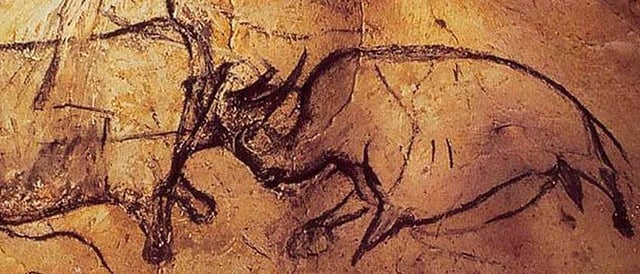
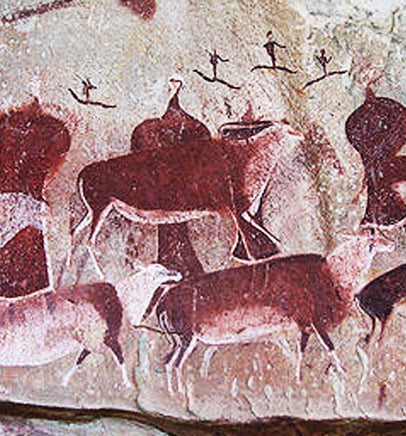
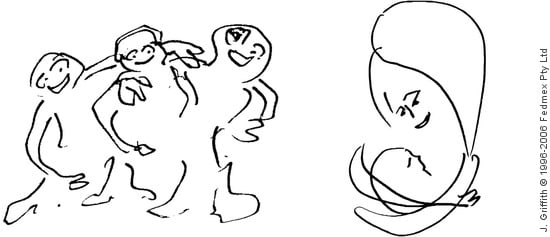
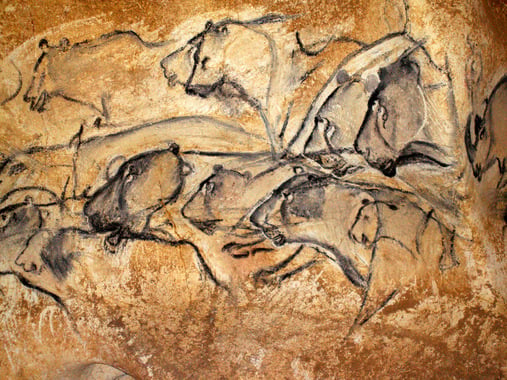
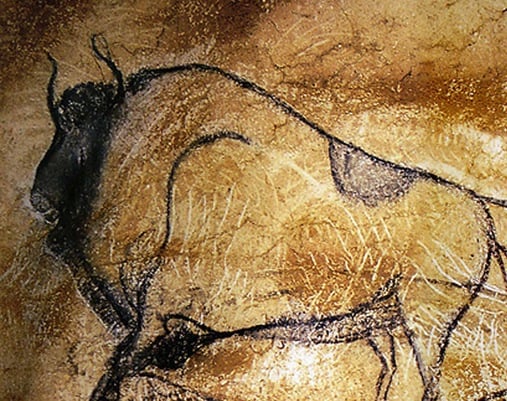
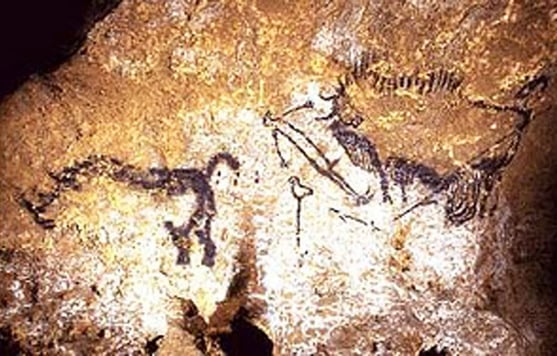
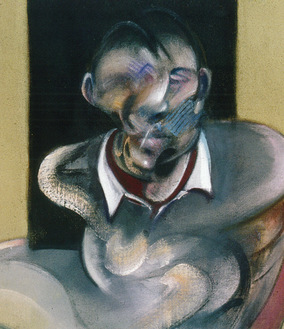

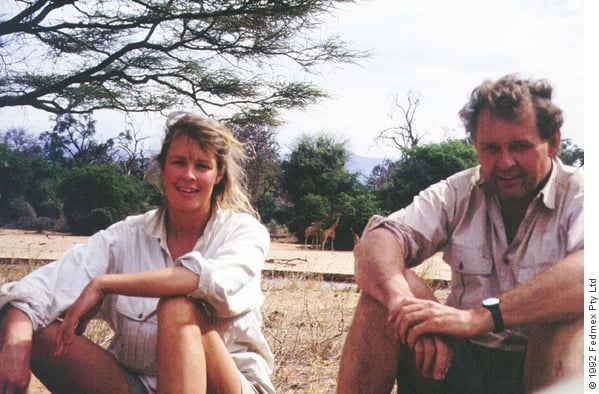
Please wait while the comments load...
Comments